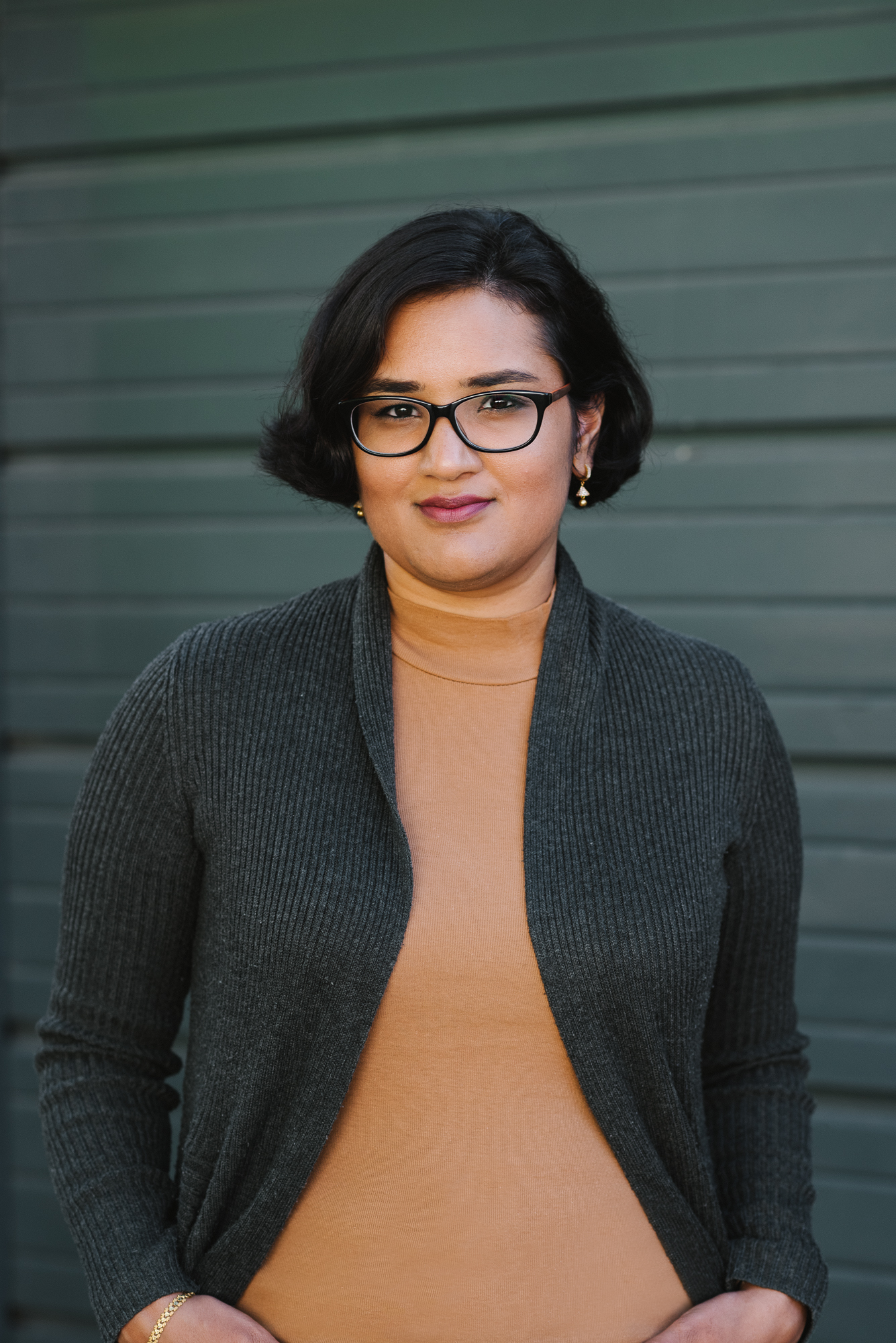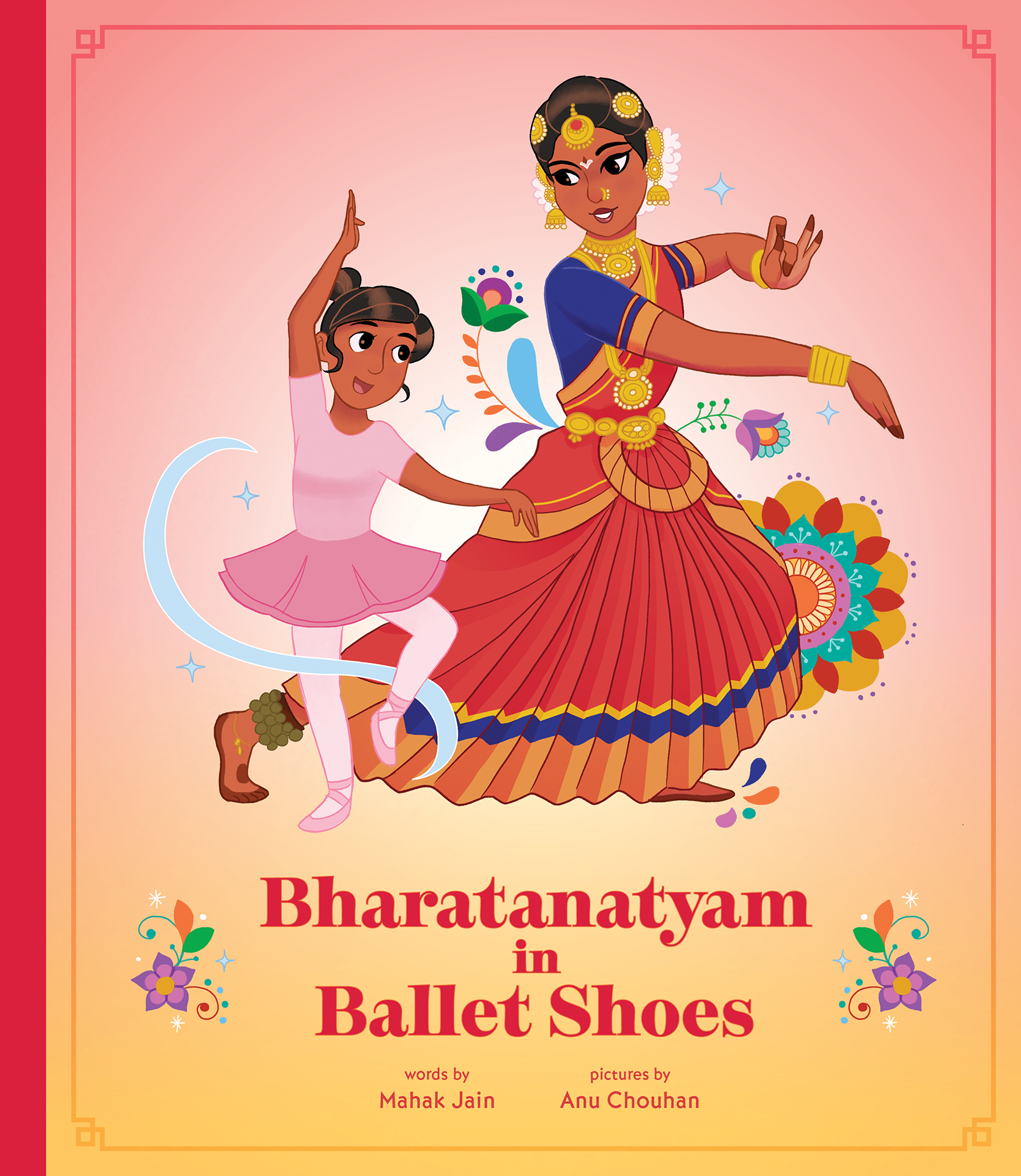Mahak Jain writes fiction and poetry for young people and adults. She is the author of three picture books and is the winner of the South Asia Book Award in 2017 and a Kirkus Best Book of the Year for 2016. Brampton Library is very excited to host Mahak Jain as she joins us this month to talk about her latest book, “Bharatanatyam in Ballet Shoes” (illust. by Anu Chouhan). Sign up to join us on Saturday, June 25 at 4 p.m. for an extra special virtual storytelling session.
We sat down for a virtual interview with Mahak Jain to discuss "Bharatanatyam in Ballet Shoes" and the importance of South Asian representation in children's books.

Questions for Mahak Jain
- Why was it important for you to write “Bharatanatyam in Ballet Shoes?"
Many books for children feature dance, especially ballet, but I hadn’t yet seen Bharatanatyam, a South Asian classical dance, represented. I wanted to make space on the shelves for a dance form from a part of the world that I could relate to culturally.
- There are many scholarly theories that reveal dance to be the closest representation of culture because it involves movement, a “being” rather than a stagnant image. In other words, instead of bottling representation of culture into one still frame, dance shows culture as constantly evolving and flexing. Do you agree with this view of dance as a cultural representation? Does this appeal to dance reveal itself in your book?
I did want to capture about how art is organic and evolving. It’s complicated with Bharatanatyam because the British, when they colonized the South Asian region, banned the classical dances of the region. The dance form wasn’t allowed to evolve naturally. If we do think of dance as a being, then we can understand the harm that was done, to a people, to a culture. A lot has been lost as a result, the impact of which is still felt today.
- In a recent CBC interview, you noted Bharatanatyam as being a dance of storytelling. What was it like to tell this story about storytelling?
I am not a Bharatanatyam dancer, but I connected with the dance form because of this relationship it has to storytelling. Bharatanatyam is a powerful dance form but also an intimate one—stories are told through large movements involving legs and arms but also small movements involving the fingers and eyes. Bharatanatyam has a dynamic physical language and it felt like a privilege to have the chance to find words to describe it.
- As a creative writing instructor, it must be your belief that some aspects of writing can be taught, or at the very least, introduced. However, do you believe that, just like with dance, there are some who have “two left feet,” as they say, when it comes to creative writing?
I always had two left feet when it came to dancing until I met my husband. He’s a great dancer but also very easygoing. We choreographed and performed two dances for our own wedding, something I never thought I could have done but it came easily with him, because suddenly dance was about play and connection. I think people who have “two left feet” when it comes to writing need the same — to find that sense of innocence and fun.
- “Bharatanatyam in Ballet Shoes” is a story about bridging the gaps between cultures, and in a way, blending or creating a hybrid of cultures: almost like a dance bilingualism. Out of this, a particular creativity reveals itself. Consequently, the images in the story employ contemporary and yet traditional colours particular to South Asian culture: this, too, is kind of bilingualism. What are some of the ways your words adhere to this bilingual theme?
That’s how I understand the story too. I grew up in various countries, amidst various cultures, and I aimed for the words to get across what it’s like to live at intersections, across identities.
- Can you tell us about some of your writing for adults that celebrates bilingualism, hybridity, or the “in-between” cultural experience?
My first book for adults is releasing in spring 2024 and it’s about this theme exactly. It’s a short story collection less about being “in between” cultures and more about the state of in-betweenness itself. The way our lives are today, there’s no sense of having ever arrived or feeling settled, or that’s how it seems to me. It seems like we are always living in a state of transition. The fluidity can be exciting but also difficult, challenging.
- What is it like writing for both genres? Do you prefer one over the other? Does it depend on your mood or motivation?
I love writing for both young people and adults. Writing in different genres gives me the chance to connect with people from different backgrounds, which is amazing. It does depend on my mood and motivation which I turn to at any given point, though. I don’t consciously set out to write for one audience or another and let the writing itself guide me.
- On your website, you showcase a quote by Sandra Cisneros: “Writing is like sewing together what I call these 'buttons,' these bits and pieces.” What do your “buttons” look like? Do they take a certain shape or form?

I keep that quote nearby as a reminder to myself. Sometimes I become too rigid about having a plan for what I am writing—but in my experience, the best writing has come from feeling out bits and pieces that I don’t really have a clear plan for, that surprise me by coming together into something unexpected.
- Finally, what advice can you provide aspiring artists in our community, whatever their craft happens to be: sewing, illustrating, writing, or dancing?
Dedication to learning about and improving your craft are important, but the main advice I would give is to play, as unselfconsciously as you can, whatever your artistic practice happens to be.
In this interview we have learned that dance is more than a movement, but rather a cultural expression and complementary artform. Mahak Jain has walked us through intersections of dance, culture, art, and writing, including the various genres she has embraced. Moving between children’s picture books, poetry, and adult short fiction, Jain reveals her versatility as an author. Brampton Library is proud to celebrate her work on June 25 with an author talk. We would like to thank Mahak Jain for speaking with us and we look forward to the upcoming event.





 905-793-4636
905-793-4636